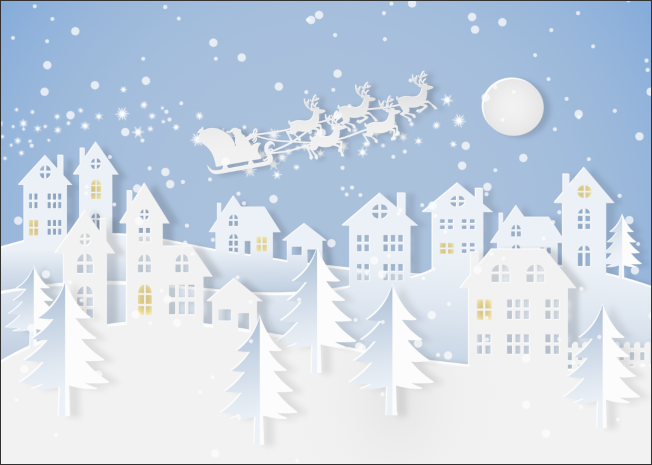
Christmas Paper Cutout Collection For Affinity Designer
By
22:55:00
With Christmas on its way lots of people are thinking about decorations, greeting cards, as well as creating their own online festive themed designs. One popular and ever fashionable form of Christmas decoration is the paper cutout effect, and this collection for Affinity Designer will enable you to quickly and easily create your own designs for either personal or commerical use.
Once you've grabbed a copy of these Affinity Desiner Assets, head back here to view the tutorial on creating festive scenes with the collection.
What Is Included In The Christmas Paper Cutout Collection
The Christmas paper cutout collection includes many items.
Once the items have been added to Affinity Designer, under the Assets tab there will be a category called Christmas 1. This is divided into a number of subcategories to make finding what you want a little easier. All the subcategories contain either festive themed assets that have a cut out effect or flat items.
The paper cutout items mostly consist of two layers (sometimes more) that have been grouped together. The bottom layer, as well as giving the item a little depth also contains an editable shadow effect. Most assets have both a paper cutout version as well as a flat one.
There are a number of snowflake designs as well as stars, fir trees, and fir tree sections that can be used to create personalised designs. There is also of course the traditional Santa in his sleigh.
As with pretty much all the assets these Christmas themed bells have a paper cutout version as well as a flat version, which adds to the options of how they can be used in your own designs.
There is also a collection of Christmas baubles. Although they are gold by default, they can be edited to be whatever colour you choose.
For outdoor Christmas scenes a collection of buildings is essential, Whilst there are fifteen buildings included, as well as a garage and picket fence, there are also some building parts so you can create your own and mix and match. A number of window shapes have been included so buildings can be created from scratch, and the windows used to save yourself some time.
Some of the basic shapes used to create the assets have been added to their own subcategory. They've been included so they can be used to help you create your own original assets. There is a collection of basic bauble shapes to which new patterns can be added, a basic bell shape, and some sections of snowflakes. There are also elements that can be used as is, such as the sparkles.
Colour Palette
The colour palette used to create the assets is included so any new designs you make will easily match the ones in the collection. The palette has been kept intentionally limited, but it can be used as inspiration for creating either new palettes or to extend the range of the original palette colours.
Brushes
These vector brushes make it easy to form decorative chains from which the baubles and bells can be attached. There are a number of star brushes because some look more natural as a horizontal chain, and others look better as vertical chains. This is easy to see by switching between brushes.
The light coloured brushes don't change their colour very well, but all other brushes can be changed to any colour you like. There is also a mixture of flat looking brushes, and some with a little 3D depth.
Once loaded into Affinity Designer the raster brushes will be found under Pixel Persona. These brushes are intended to be more decorative than the vector alternatives, and can easily be edited by double clicking on them. (If you're concerned about messing up a brush, make a copy before editing).
There are a few snowflake themed brushes, as well as a few stars brushes, some twinkle brushes and a couple of basic snow brushes. The twinkle brushes look especially good with a subtle outer glow effect applied.
Styles
The styles allow you to use colour consistently throughout your designs, and most have been applied to the assets in the collection. The styles named 'shading' are used to apply a gradient colour to an item, and the styles named 'shadow' help to give each item a consistent shadow.
Scenes and Borders
To get you started quickly a number of paper cutout scenes and borders have been added. Just drag one from the Assets tab and use the align function to place accurately in the canvas area. Most have been created using an A2 setting. Some will need to be used on a landscape canvas, and others will need a portrait canvas. Its very apparent which is which.
Christmas Paper Cutout Examples
Below is a few examples of Christmas paper cutout scenes, as well as a website header and a background image, all created with this Affinity Designer Christmas paper cutout collection. These scenes are quick and easy to create, and I'm sure you'll be creating incredible festive paper cutout scenes in no time.




























































